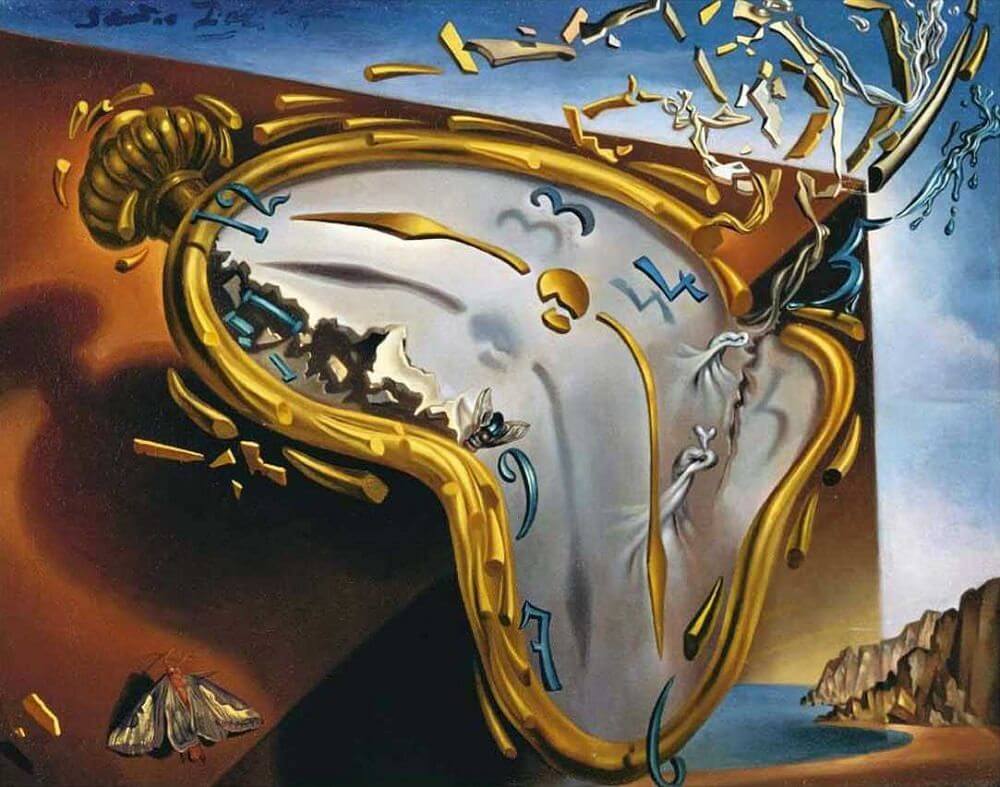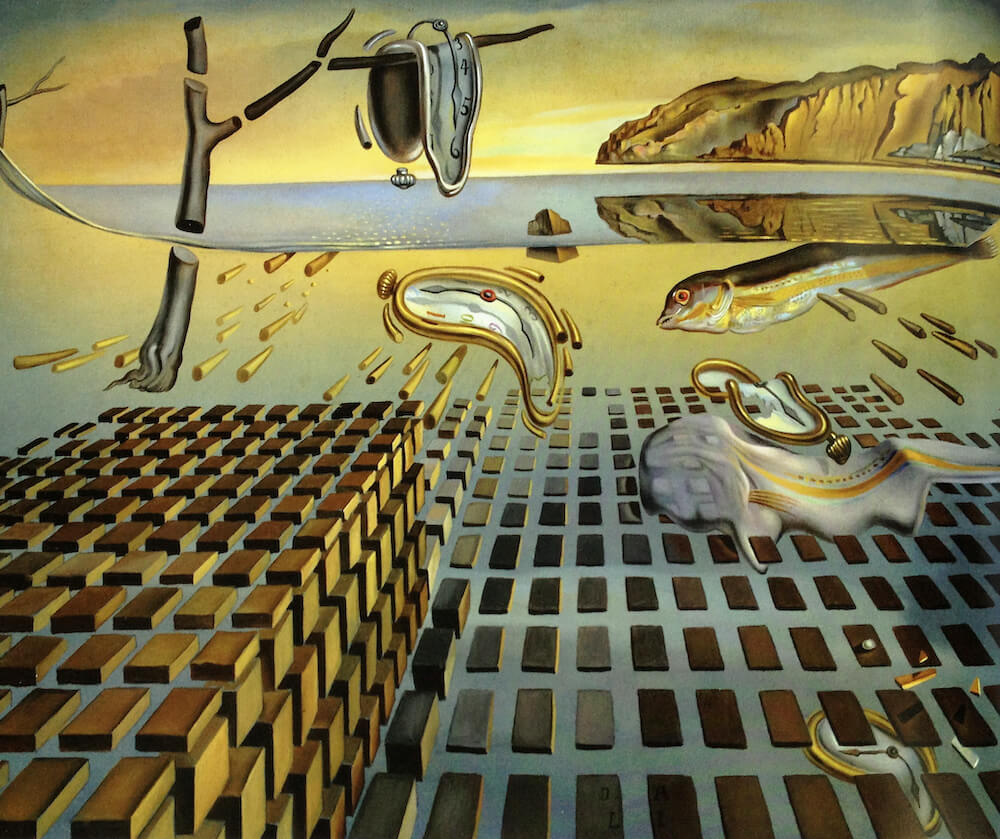28 Feb ARD 608- Dali `s paintings analisis
Surrealism rejects logic, reason, and natural order. It uses techniques such as dreamlike or ghostly qualities, juxtaposition (a method for rejecting harmony in their work) and incorporates surreal objects and subject matter. Dali uses these same techniques in his painting Soft Watch at the Moment of Explosion to intrigue his viewers and provoke thought.


In his painting, Dali assimilates shadowy outlines of objects and uses the dreamlike quality in the way the watch twists and its broken pieces unexplainably float above it. Also, the ghostly way the watch drapes over one edge of the box as if melting. The watch seems to be pulling apart and stretching. It may denote Dali’s belief that time passing brings eventual destruction.
In Soft Watch at the Moment of Explosion, Dali incorporates a great deal of color juxtaposition. Most of the background consists of deep browns and gold and is contrasted by the white clock in the center of the painting. Dali’s painting also displays surreal objects, although most of these are in the foreground (a moth, a fly, and a bizarre clock). In the background, we see a small cluster of mountains
Salvador Dali considered dreams and imagination as central rather than marginal to human thought. He also embraced the surrealist theory of automatism; he transformed this theory, into something that was seen in a more positive light, which he titled critical paranoia. Under the concept, he described how the artist should focus on cultivating a genuine delusion while still remaining aware at the back of their mind, that control and reason will be suspended for a period of time. Nowhere is the identification between the modern individual and the subject matter more evident than in Surrealism, where internal tumult is often envisioned as an external phenomenon, one iconic example of such works is “Persistence of Memory”, 1931.


The Disintegration of the Persistence of Memory (oil on canvas, 1952 to 1954) is an oil on canvas re-creation of Dali’s famous 1931 work “The Persistence of Memory” and measures a diminutive 25.4 x 33 cm.
In this version, the landscape from the original work has been flooded with water. Disintegration depicts what is occurring both above and below the water’s surface. The landscape of Cadaques is now hovering above the water. The plane and block from the original are now divided into brick-like shapes that float in relation to each other, with nothing binding them. These represent the breakdown of matter into atoms, a revelation in the age of quantum mechanics. Behind the bricks, the horns receding into the distance symbolize atomic missiles, highlighting that despite cosmic order, humanity could bring about its own destruction. The dead olive tree from which the soft watch hangs has also begun to break apart. The hands of the watches float above their dials, with several conical objects floating in parallel formations encircling the watches. A fourth melting watch has been added. The distorted human visage from the original painting is beginning to morph into another of the strange fish floating above it. To Dali, however, the fish was a symbol of life.


Dali was deeply influenced by the work of Sigmund Freud, contending “The only difference between immortal Greece and contemporary times is Sigmund Freud, who discovered that the human body, purely platonic in the Greek epoch, is nowadays full of secret drawers that only psychoanalysis is capable to open.” The artist was especially interested in Freud’s interpretation of William Jensen’s Gradiva, a 1903 novel about an archaeologist’s obsession with an ancient relief; this curiosity coincided with his first explorations on the theme of cabinets – works such as the intimately scaled Atmospheric Chair (1933), in which a small cabinet seems to give birth to a maelstrom of vaguely human body parts.
In The Anthropomorphic Cabinet (1936), Dali transformed the cabinet into a female figure, or, as he put it, an “anthropomorphic cabinet.” The female figure here is more lifelike, and unlike the Venus statue, she is depicted reclining. Her head leans forward over the partially open drawers, and her hair falls forward so as entirely to obscure the face.




Sorry, the comment form is closed at this time.